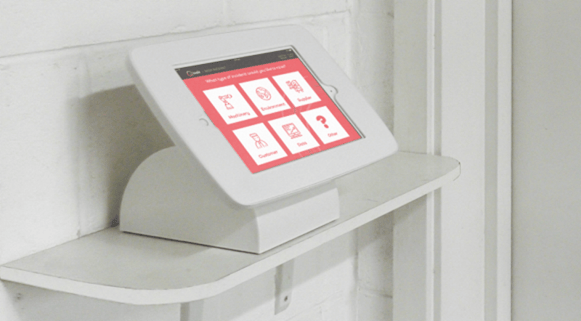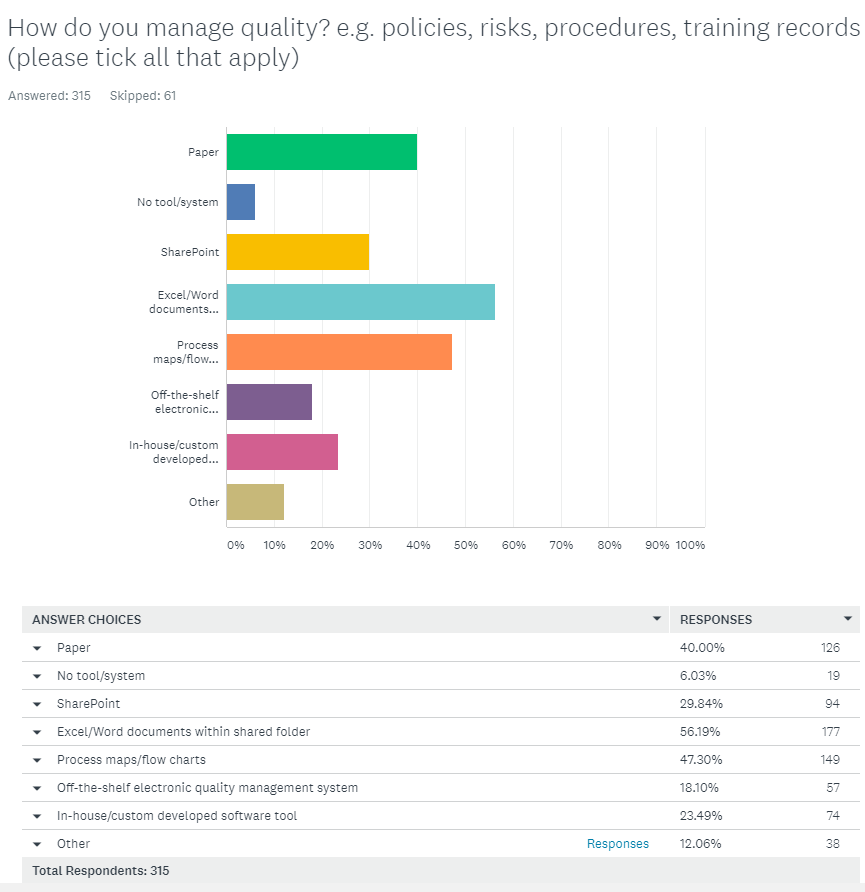Want to contribute to this article?
70% of respondents surveyed in the Global Governance, Risk and Compliance Report said the changes to the quality management Standard, ISO 9001:2015, had a positive impact on their business.
But what is the purpose of a quality management system? And what are the real benefits of implementing a quality management system? What mistakes should be avoided when implementing a quality management system?
Here, Kate Armitage, Product Quality Assurance Manager shares six benefits of implementing a quality management system, mistakes to avoid and has included a presentation you can use to get buy-in to implement a quality management system.

The purpose of a quality management system
Think back to a time when you've purchased something, and you were really disappointed. Perhaps it was a car, a mobile phone or something less expensive like a pen. You got a faulty one. How did that make you feel?
It didn't do what you wanted. So you either called up the call centre, complained to everyone about it or just left it, really dissatisfied. The purpose of a quality management system is to prevent the issues with the product or service before you become dissatisfied.
ISO 9001:2015, the quality management system standard, helps your business to demonstrate the ability to consistently supply products and services that meet customer and applicable statutory and regulatory requirements. It helps ensure your customers stay satisfied.
ISO 9001:2015 is based on seven quality management principles. For each of the below, we've provided a link:
- Customer focus
- Leadership
- Engagement of people
- Process approach
- Improvement
- Evidence-based decision making
- Relationship management
Six benefits of a quality management system
1. A quality management system helps leadership
Objectives of the business are important because they govern the values and strategic direction. A mistake many leadership and management teams tend to make is to oversimplify their objectives. For example, objectives focusing solely on growth, revenue or headcount.
A quality management system requires top management to ensure there is a balanced array of objectives which meets the needs of all interested parties whom the business's survival depends e.g. customers, shareholders, managers, employees and the community.For examples, objectives need to consider the sustainability of the business, such as health and safety, environmental, risk, security.
A quality-approach ensures the business is aligned, well-rounded and sets goals for monitoring and evaluating performance.

2. A quality management system promotes a customer-led business
The information revolution, rapidly changing technologies, and lower barriers to entry have led to an explosion of competitors - making it harder and more expensive to acquire new customers. It's now even more important to retain customers.
However, retaining customers starts with understanding customer needs and satisfying them (but make sure you don't fall into this trap). A business failing to satisfy customers simply will not survive.
A quality management system plays a central role in keeping the customer satisfied by specifying what your business needs to do to meet deliver the products and services fit for purpose.
Most corporations are like giant jellies. You can force them briefly into a new shape. But unless you can fundamentally reform the culture, they swiftly wobble back into their old form.
- Richard Heygate, McKinsey & Co.
3. A quality management system improves company culture
Quality has two distinct meanings. The first, and most important, is as a philosophy for the whole business. It defines the primary goal of everyone in the organisation as meeting the needs of customers.
The second meaning of quality is the set of processes, policies and procedures which constitute operational planning and decision making.
Most quality management software vendors only help you with the latter. Qualsys does both.
4. A quality management system improves the bottom line
An effective quality management system will encourage all employees to systematically address risks and opportunities. This means that as needs of customers change, new technologies appear, issues creep in, all employees naturally identify opportunities to eliminate waste and increase profit.
Here's how Qualsys's software has helped Data Image

5. A quality management system ensures new innovations are managed
A key strategic focus for today's most successful companies is innovation and new product development. Continuous improvement is the only way to sustain above-average growth and profitability. Only by continually updating products, diversification, and broadening the range can companies accelerate growth.
However, fast-track innovation is not easy. Innovation requires a quality approach. It requires an understanding of the changes to be made, collaboration of subject matter experts, and documentation to make sure the product / service is fit for purpose.

6. A quality management system helps you understand why things aren't going well
If your business experiences symptoms of decline, such as falling profitability, eroding market share and deteriorating liquidity, the quality management system can help treat the cause.
Many businesses jump to conclusions before they understand the real root cause. This leads to changes being made without full understanding of the consequences. A quality management system and quality-approach helps you to connect the dots.
Read the problem when your business invests in the new.

Types of quality management systems
What to do now:
All these benefits were taken from a stakeholder engagement presentation which you can download from our Culture of Quality toolkit.









Share your thoughts on this article